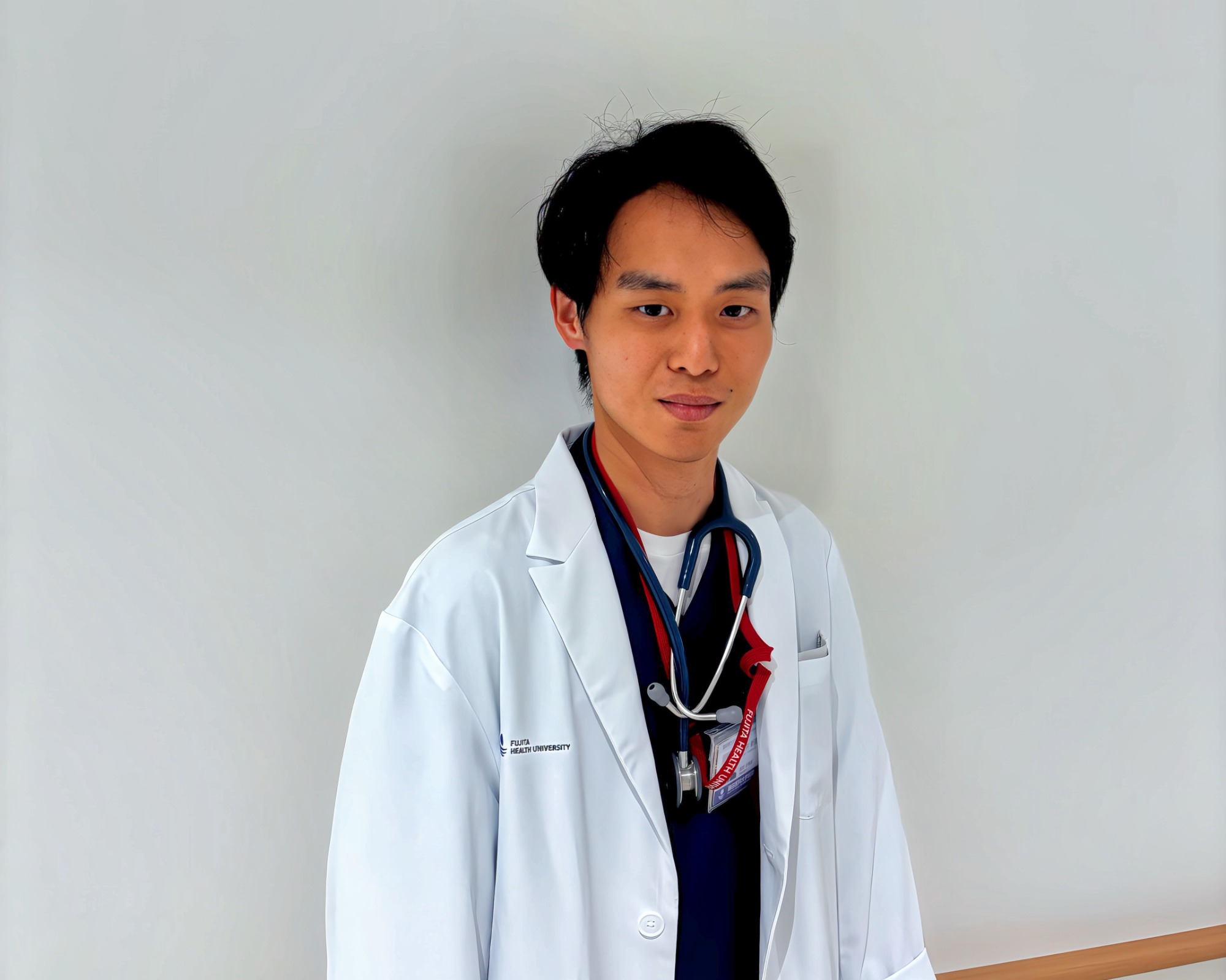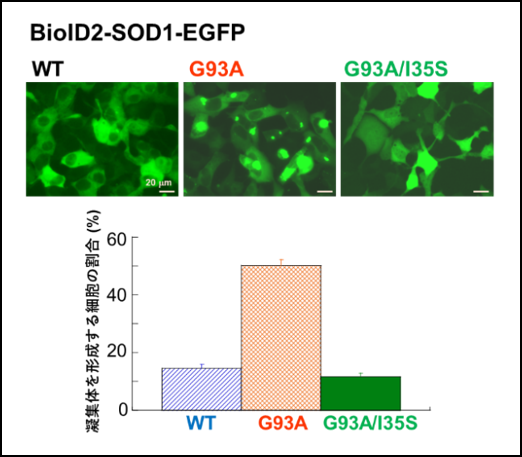Notice
[Graduates' achievements] Wide-ranging learning in the research physician course takes shape ~ Aiming to become a doctor capable of both clinical practice and research in the future
A paper submitted as lead author by Shinki Asai, who graduated from School of Medicine in March of this year and received the President's Award for the Research Physician Course, was published in the international journal Molecular Neurobiology on July 26, 2024.

Shinki Asai
As a research student, Asai has been conducting research with Professor Noriko Fujiwara in the Department of Department of Biochemistry for four years. Despite the busy and mentally challenging time between her graduation exam and national examination, she has been working very hard, including conducting the experiments necessary to revise her thesis.
Currently, Asai is working hard every day as a resident at Fujita Health University Hospital. In the future, he aims to become a clinician and researcher conducting basic and clinical research on neurodegenerative diseases, including amyotrophic lateral sclerosis (ALS).
We spoke to Asai about what he learned in the Research Physician Course and his future prospects.
*In this research, the experiments were conducted mainly by Asai and Kwansei Gakuin University research students, Yano Momoka and Higashino Tomoyuki.
Interview
Why did you choose the research physician course?
I was interested in research from the beginning of my enrollment, and during the summer vacation of my first year, I had the opportunity to do some experiments in the Department of Biochemistry course. During my basic research assignment in my second year, I conducted research on ALS with Professor Fujiwara of Department of Biochemistry course, which really interested me. As a result, I wanted to continue my research on ALS in the research physician course from my third year onwards, and decided to work in the Department of Biochemistry course.
Please tell us what you have learned or gained while conducting your research.
In addition to cell culture and genetic modification experiments, I learned a wide range of things, including how to design research, how to proceed with considerations, and how to create PowerPoint presentations.
Please tell us about any difficulties you faced in your research or writing your thesis.
When I first started my research, I struggled with trial and error and was unable to achieve results. In addition, the additional experiments I conducted to revise my thesis after the fall of my sixth year were particularly difficult.
Please tell us your thoughts on research and clinical practice.
ALS, the disease I have been researching, is one for which the mechanism and treatment have yet to be established. I believe that basic research is essential to exploring the causes of neurodegenerative diseases, including ALS, and developing treatments. Currently, as a medical intern, I am learning about a variety of diseases from a clinical perspective, and I feel that understanding the problems and symptoms that patients face is important in clinical practice. In the future, I would like to reflect clinical issues and questions in my basic research and advance it.
Please give us your honest thoughts about your paper being published.
My honest reaction is that I am very happy. I was able to submit this paper thanks to the support of Professor Fujiwara, the professors in the Department of Biochemistry Department, and research students Yano and Higashino from Kwansei Gakuin University. I would like to express my sincere gratitude. Thank you very much.
What kind of career do you plan to pursue in the future?
In the future, I would like to become a neurologist and be able to treat neurodegenerative diseases such as ALS. Clinical trials for ALS are beginning, and I would love to be able to participate. Ultimately, I hope to become a doctor who is involved in both clinical and basic research.
Message from my supervisor (Professor Noriko Fujiwara, Department Department of Biochemistry)
Congratulations to Asai on receiving the President's Award for the Research Physician Course and for publishing his paper! Asai has been doing experiments in the Department of Biochemistry Department since his first year, and even his second-year basic laboratory placement training was in the Department of Biochemistry Department, so he's been frequenting the Department of Biochemistry Department for six years. He conducts experiments independently and efficiently, self-studying between experiments, and consistently achieves top grades. In particular, during the revised experiments in November of his sixth year, he cultured cells and performed Western blots, even though he was in the final stages of studying for his national exam. I was the one who was nervous and worried, wondering if he would be able to do it. While he is currently training every day as a resident, I believe the "attitude of perseverance" he has cultivated through this research will be useful even after he becomes a doctor. I look forward to seeing him continue to excel as a "true research physician" capable of both clinical and basic research.
About the Research Physician Course
Hyogo Medical University has established a "Research Physician Course" to allow students to experience the excitement of research and acquire a certain level of knowledge while still enrolled in the Faculty School of Medicine. There are two courses: the "Pre-Course (3rd year)" and the "Specialist Course (4th to 6th year)," and students are selected from applicants for each course. Students in the Research Physician Course are provided with budgetary support for their research activities and scholarships if they request them. In addition, faculty members in the assigned laboratory act as mentors for students, providing one-on-one consultations on their studies and career paths.
Hyogo Medical University Medicine Research Physician Course Official Homepage
Publication information
Paper title
The Ile35 Residue of the ALS-Associated Mutant SOD1 Plays a Crucial Role in the Intracellular Aggregation of the Molecule
"The isoleucine residue at position 35 of ALS mutant SOD1 plays a crucial role in intracellular aggregation"
Publication
Molecular Neurobiology (IF: 4.6)

Figure 1
Key points of this research
In this study, we found that when an expression system in which BioID2 was fused to the N-terminus of SOD1-EGFP was used, intracellular aggregate formation was significantly increased with ALS mutant SOD1 compared to wild-type SOD1.
・Using this expression system, the C-terminal end of SOD1 was sequentially deleted, and it was found that aggregates were not formed when the sequence was shorter than "1-34," which is the partial sequence on the N-terminal end of SOD1. However, aggregates were formed when the amino acid sequence was longer than "1-35" (deletion mutations such as 1-120 and 1-140).
・We found that substituting the 35th amino acid residue, isoleucine (I35), of ALS mutant SOD1 with the hydrophilic amino acid residue serine (S) significantly suppressed aggregate formation.
Figure 1 shows that aggregate formation is increased in the ALS mutant SOD1 G93A (the 93rd amino acid is mutated from glycine to alanine) compared to wild-type (WT) SOD1, and that aggregate formation is suppressed in G93A/I35S, in which I35 is mutated to serine.